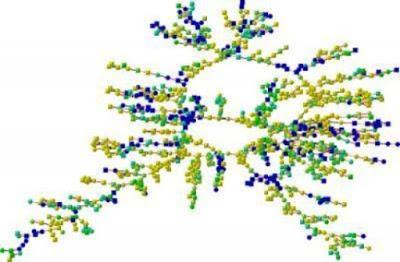
One of the most interesting authorities on social models and simulations is Scott Page. This month he published a major book on this topic, The Model Thinker: What You Need to Know to Make Data Work for You, and it is a highly valuable contribution. The book corresponds roughly to the content of Page's very successful Coursera course on models and simulations, and it serves as an excellent introduction to many different kinds of mathematical models in the social sciences.
Page's fundamental premise in the book is that we need many models, and many intellectual perspectives, to make sense of the social world. Mathematical modeling is a way of getting disciplined about the logic of our theories and hypotheses about various processes in the world, including the physical, biological, and social realms. No single approach will be adequate to understanding the complexity of the world; rather, we need multiple hypotheses and models to disentangle the many concurrent casual and systemic processes that are under way at a single time. As Page puts the point:
As powerful as single models can be, a collection of models accomplishes even more. With many models, we avoid the narrowness inherent in each individual model. A many-models approach illuminates each component model's blind spots. Policy choices made based on single models may ignore important features of the world such as income disparity, identity diversity, and interdependencies with other systems. (2)Social ontology supports this approach in a fundamental way. The way I would put the point is this: social processes are almost invariably heterogeneous in their causes, temporal characters, and effects. So we need to have a way of theorizing society that is well suited to the forms of heterogeneity, and the many-models approach does exactly that.
Page proposes that there are multiple reasons why we might turn to models of a situation (physical, ecological, social, ...): to "reason, explain, design, communicate, act, predict, and explore" (15). We might simplify this list by saying that models can enhance theoretical understanding of complex phenomena (explanation, discovery of truth, exploration of hypotheses) and they may also serve practical purposes involving prediction and control.

Especially interesting are topics taken up in later chapters of the book, including the discussion of network models and broadcast, diffusion, and contagion models (chapters 9-10). These are all interesting because they represent different approaches to a common social phenomenon, the spread of a property through a population (ideas, disease, rebellion, hate and intolerance). These are among the most fundamental mechanisms of social change and stability, and Page's discussion of relevant models is insightful and accessible.
Page describes the constructs he considers as models, or abstract representations analogous to mathematical expressions; but we might also think of them as mini-theories of social mechanisms. Many of these examples illustrate a single kind of process that is found in real social situations, though rarely in a pure form. Games of coordination are a good example (chapter 15): the challenge of coordinating behavior with another purposive actor in order to bring about a beneficial outcome for both is a common social circumstance. Game theory provides an abstract analysis of how coordination can be achieved between rational agents; and the situation is more complicated when we consider imperfectly rational actors.
Another distinction that might be relevant in sorting the models that Page describes is that between "micro" and "macro". Some of the models Page presents have to do with individual-level behavior (and interactions between individuals); whereas others have to do with transitions among aggregated social states (market states, political regimes, ecological populations). The majority of the models considered have to do with individual choice, decision rules, and information sharing -- a micro-level approach comparable to agent-based modeling techniques. Several of the systems-dynamics models fall at the macro-end of the spectrum. Page treats this issue with the concept of "granularity": the level of structure and action at which the model's abstraction is couched (222).
The book closes with two very interesting examples of important social phenomena that can be analyzed using some of the models in the book. The first is the opioid epidemic in the United States, and the second is the last four decades' rapid increase in economic inequality. Thomas Schelling's memorable phrase, "the inescapable mathematics of musical chairs", is relevant to both problems. Once we recognize the changing rates of prescription of opioids, clustering of opioid users, and probability of transitioning from usage to addiction, the explosion of addition rates and mortality is inevitable.
Early in the book Page notes the current vogue for "big data" as a solution to the problem of understanding and forecasting large social trends and changes. He rightly argues that the data do not speak for themselves. Instead, it is necessary to bring analytical techniques to bear in order to identify relevant patterns, and we need to use imagination and rigor in creating hypotheses about the social mechanisms that underlie the patterns we discover. The Model Thinker is indeed a model of an approach to analyzing and understanding the complex world of social action and interaction that we inhabit.
